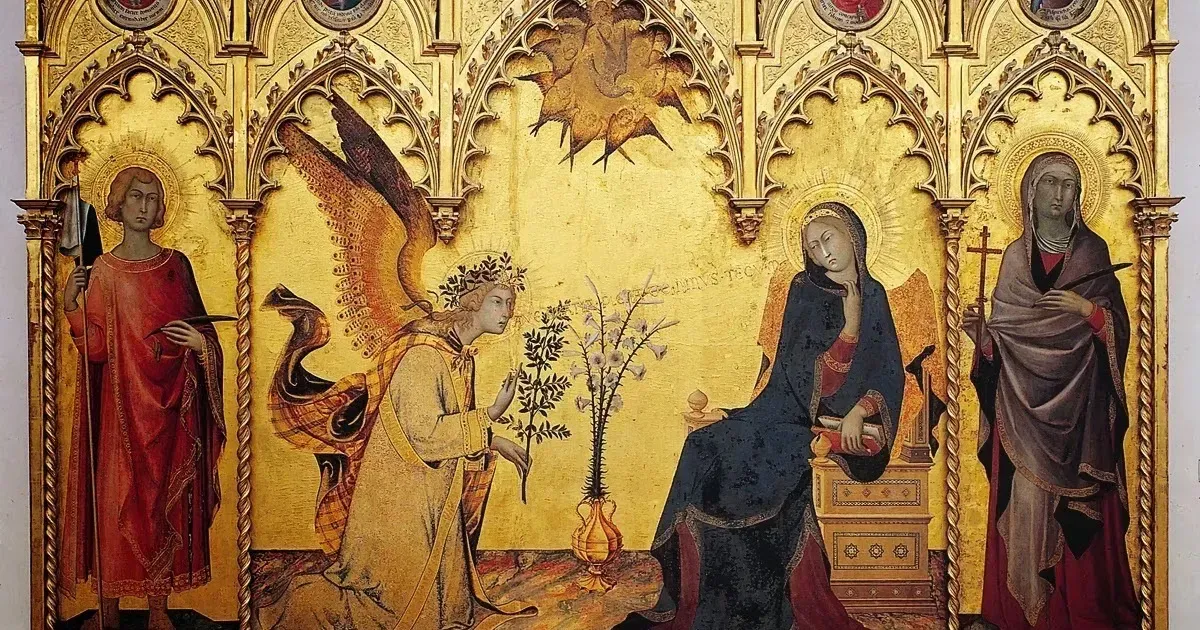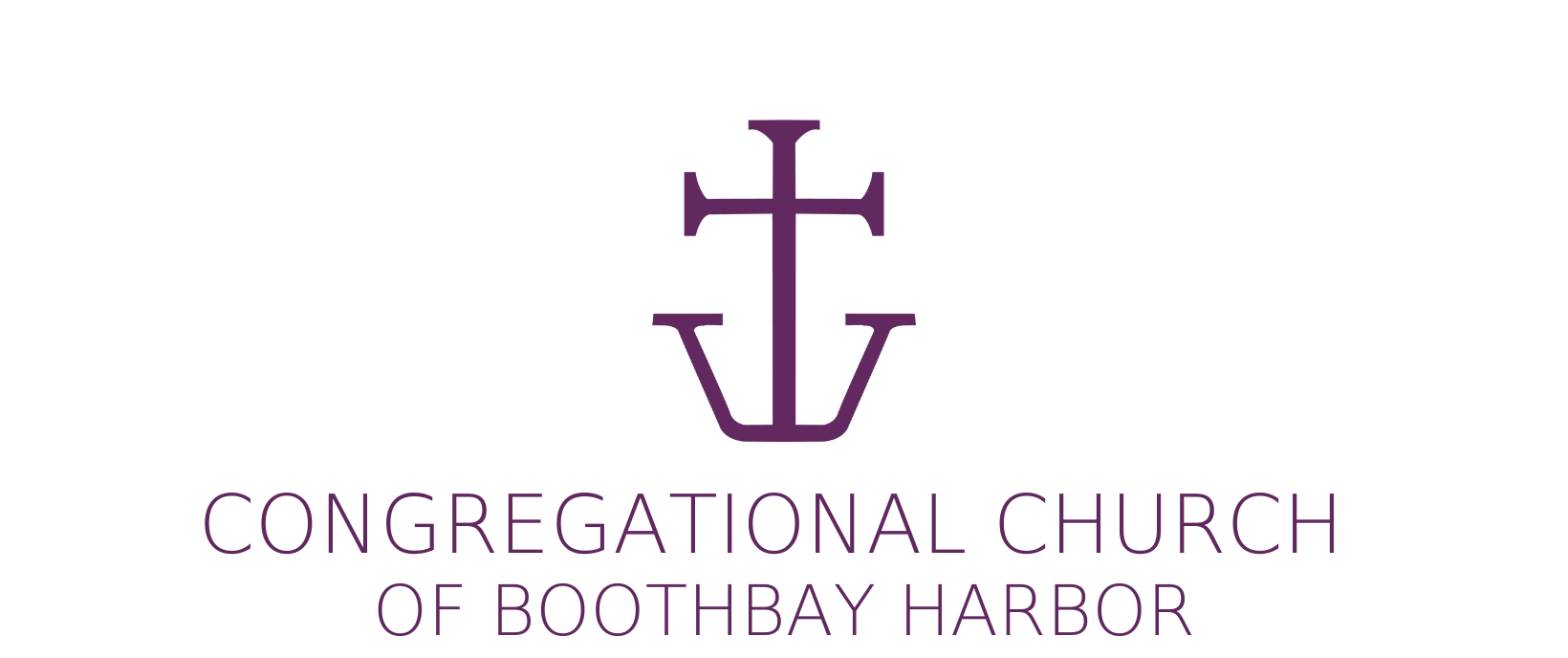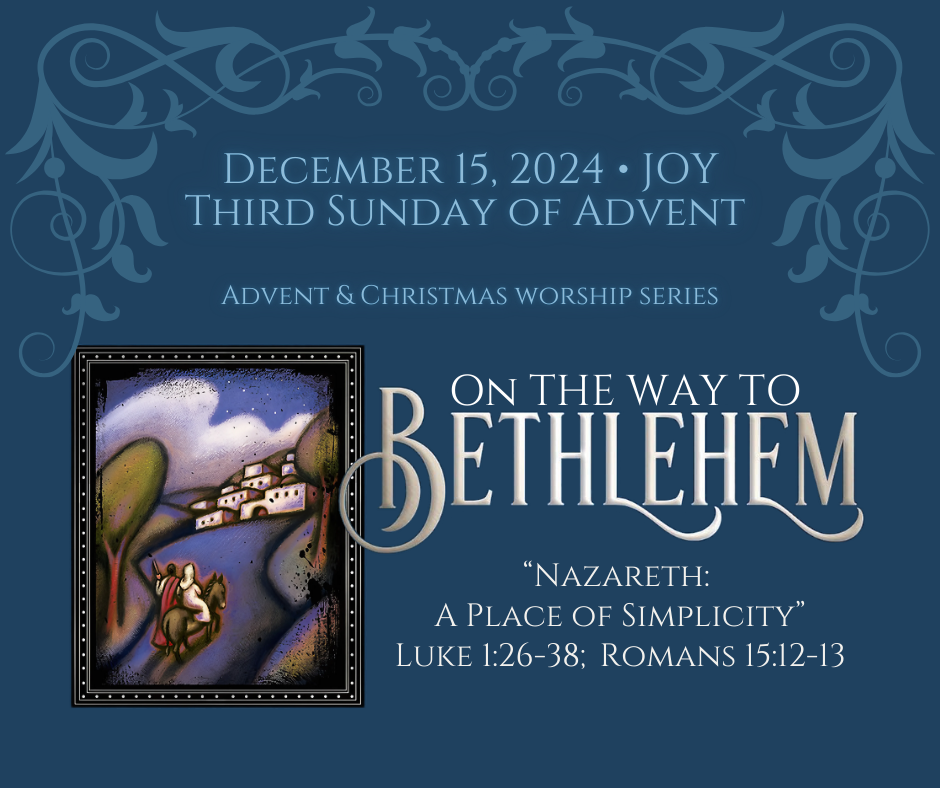A Visit to Nowheresville
28 The angel went to her and said, “Greetings, you who are highly favored! The Lord is with you.” 29 Mary was greatly troubled at his words and wondered what kind of greeting this might be. (excerpt from Luke 1:26-38)
We are following the Angel Gabriel's Christmas Tour in Luke's Gospel. Last week, he suddenly appeared at the Temple, interrupting the 9:00 AM Mass to tell Zachariah that he and his wife would give birth to John the Baptist. Six months later, Gabriel is visiting the tiny village of Nazareth to make his second proclamation to a peasant girl named Mary. Next Sunday, Gabriel will travel to Bethlehem to give a birth announcement to the shepherds. Luke's birth story shows us the contrast between the decree of Ceasar Augustus, who wants to tax everyone for his empire, and Gabriel's decrees in Jerusalem, Nazareth, and Bethlehem. These decrees declare the inbreaking of hope, peace, joy, and love through Jesus of Nazareth.
As we visit ancient Nazareth, the contrast with Jerusalem is immense. Jerusalem is the center of the biblical narrative, and Nazareth could fit in the corner of the Temple. The rest of Israel has a low opinion of Nazareth. In John's Gospel, when Philip the disciple first hears Jesus is from Nazareth, he says, "What good can come from Nazareth?". The ancient historian Josephus, one of the essential non-biblical sources for information about Jesus' time, lists 240 villages in upper Galilee. Nazareth does not appear. We know from archeological digs that the town was there, but it's not worth mentioning. The town had limited geographical potential because it wasn't close to water. Nazareth had one well that could support 100 to 400 people at best.
Small towns get no respect and have names like Nowhere, Oklahoma; Boring, Oregon; Lost, Pennsylvania; or my favorite, Truth or Consequences, New Mexico. Nazareth could be derived from the Hebrew word for branch or shoot, Netzer. The name could refer to the messianic words of Isaiah 11:1, "A shoot shall come from the stump of Jesse; from its roots a branch shall bear fruit." A shoot from a stump. We have a large stump from a dead tree in our backyard, which I use to chop wood. Last year, a shoot grew from it and sprouted leaves. The tree was dead, cut down, but there was some new life from the stump.
In the same way, the Davidic line of great kings in the Bible failed, but the Messiah will be new life from the failed lineage. If this is what the people of the tiny village of Nazareth were thinking, I like their spunk. We may be Nowhere, Galilee, but new life starts here.
A young peasant woman named Mary was on her way to the town well. You might not pick her out of line up as the mother of the Messiah. The Bible never tells us if she is short, tall, pretty, intelligent, or a good knitter. We might think Elizabeth, John the Baptist's mother, was better suited to be the First Mom. She descended from priests, and her husband Zachariah was an important priest. Interestingly, Gabriel appoints the powerful priestly family to birth the rabble-rouser, anti-establishment prophet John the Baptist, who wears camel hair and eats locusts. Some kids just have to rebel.
We only know about Mary by how she acts. Gabriel approaches the young woman and says, "Greetings, favored one. The Lord is with you." In Latin, the words are "Ave, Maria." The King James reads, "Hail Mary, full of Grace."
The scripture says Mary is perplexed and ponders this strange greeting. This translation is too mild if we compare it with other uses of the Greek word "diatarraso" in the Bible. When Herod discovers a new king has been born, he is "diatarraso." When Jesus faces his arrest in John 12:27, he says his soul is "diatarrso." The same word describes how the disciples feel when they think they have seen a ghost walking on the water. Mary is just a teenager who is asked to take on a mission to be the mother of the Messiah. Troubled barely grazes the emotions more like distressed or disturbed.

We need to look at Renaissance art to identify with Mary. When you enter the Uffizi Gallery in Florence, Italy, the first room contains Martini's Annunciation. We know Martinni is capturing the moment of the greeting because the words coming out of his mouth are "Ave Maria." Mary pulls back from Gabriel and looks over her shoulder with an epic stare-down. That is a first-class version of the "What are you looking at?" teenager "mind-your-own-business" look.
Gabriel wisely moves to his standard line, "Be not afraid." After that stare, he may be talking to himself. Remember that Gabriel is playing the role of royal herald, so the following words may have been delivered like a grand announcement:
You have found favor with God. 31 And now, you will conceive in your womb and bear a son, and you will name him Jesus. 32 He will be great and will be called the Son of the Most High, and the Lord God will give to him the throne of his ancestor David. 33 He will reign over the house of Jacob forever, and of his kingdom, there will be no end."
“How can this be?” Mary answers. A 21st-century Mary might answer, "Seriously? How is this going to work since I haven't even, you know, been with a guy before?"
Because of the theology of the virgin birth, I think this passage gets over-sexualized. Mary's question may not be just about sex but the whole process. She is a teenager who is engaged to Joe through an arranged marriage. She hasn't even thought about her dress, wedding venue, or invitations. Is there going to be a honeymoon? Or maybe she is more concerned about the "Son of the Most High, kingdom without end" proclamation. Raising a child is a big task, but how can she raise a Messiah? Remember, we are in Nazareth, with 200-300 villagers, where Amazon takes two weeks. How is Mary supposed to manage this? Again, wouldn't Elizabeth be more qualified?
Let's suppose that Gabriel's answer is also not describing how the sexual encounter is going to work. "The Holy Spirit will come upon you, and the power of the Most High will overshadow you. Therefore, the child shall be holy." The role of the Holy Spirit is central to Luke's story. The Holy Spirit delivers wisdom and insight to various characters 17 times in the Gospel and another 49 times in the Acts of the Apostles. In the other 65 references, the Holy Spirit guides, directs and gives people insight without impregnating them. Could Gabriel be saying, "Mary, you will have guidance all along the way. The Holy Spirit will be your companion. God has asked something hard of you, and God's got you through it all." If you were Mary, would you rather know how the IVF is going to work or if God is going to be with you to raise a Messiah?
I'm not arguing "for" or "against" the traditional theology of the virgin birth. Since two of the four Gospels don't mention it, and two do, we are 50/50. I'm not advocating dismissing it, but rather, being open to the guidance and wisdom of the Holy Spirit is the central message of Luke's Gospel. Seeking the Spirit is the daily work of being a Christian, listening, and following the guidance to bring forth love into the world.
It fills me with awe that the origins of Jesus lie in a village beneath mention in history—a real Nowheresville. Mary has no rank, connections, or worldly prospects. But she does have spiritual perception and a willingness to listen for God’s Spirit. When Gabriel finishes, Mary replies:
"Here am I, the servant of the Lord; let it be with me according to your word."
"Here I am." Sound familiar? When God speaks from the burning bush, Moses answers, "Here I am." Abraham, Jacob, Samuel, and Isaiah respond the same way. Mary echoes these great figures, aligning herself with God’s call. In Hebrew, "let it be" isn’t passive. It signals readiness, attention, and a willingness to act.
Too often, Mary is portrayed as submissive, but "let it be" is more like "let’s do this." For Star Trek fans, think of Jon Luc Piccard commanding, "Make it so." Mary’s words echo God’s in Genesis: "Let there be light." “Amen is also a form of “Let it be.” We say the word quietly like it means “the end. But it’s more like “let’s roll.”
Mary’s “Let it be” is not a whisper of submission—it’s a bold declaration of trust and action, echoing the very words God spoke to create light and life. Her faith reminds us that greatness often arises from unexpected places, even from the “Nowheresvilles” of the world.
What is God calling you to say “Let it be” to? Where in your life can you step forward with Mary’s courage and trust?
Are you ready to listen, trust, and act when called—confident that God’s Spirit is with you? As we go forth, carry the words in your heart of Gabriel, “Do not be afraid,” and Mary, “Here I am. Let it be.”
Amen.





